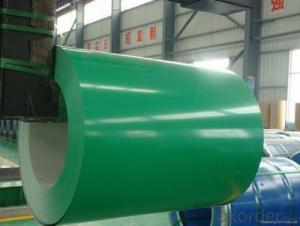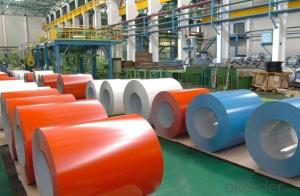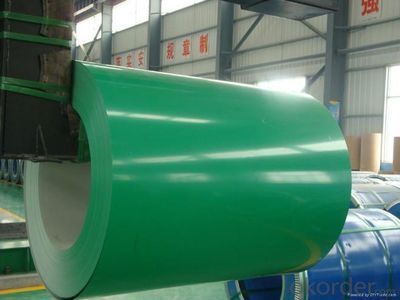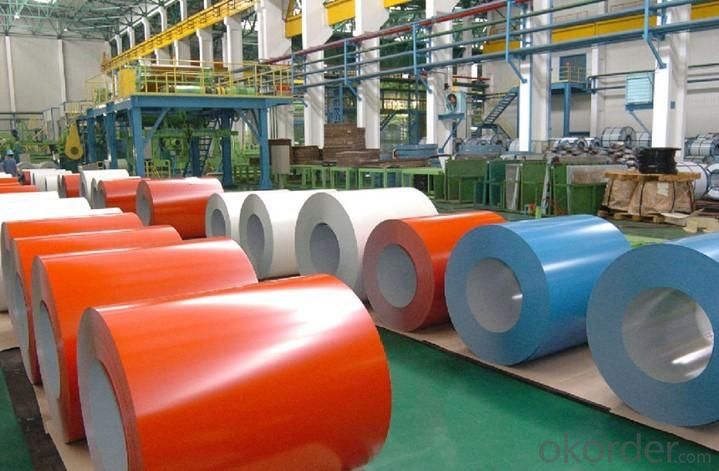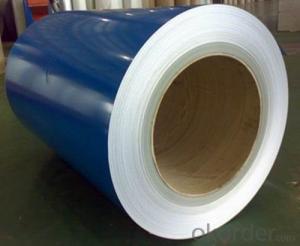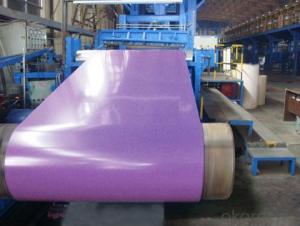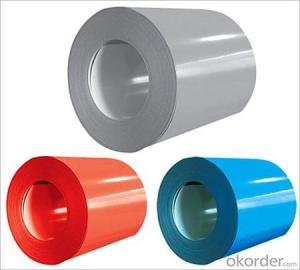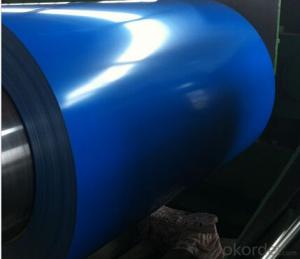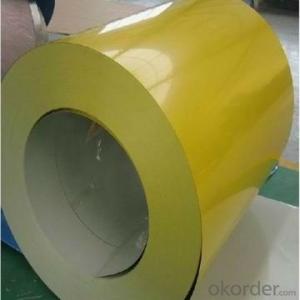Coated Steel coil/Roofing Application/AL-Zn PPGI
- Loading Port:
- Tianjin
- Payment Terms:
- TT OR LC
- Min Order Qty:
- 25 m.t.
- Supply Capability:
- 50000 m.t./month
OKorder Service Pledge
OKorder Financial Service
You Might Also Like
Coated Steel coil/Roofing Application/AL-Zn PPGI
1. Detailed Specifications:
| Product | Coated Steel coil/Roofing Application/AL-Zn PPGI |
| Base material | Hot dipped galvanized steel sheet |
| Top side: | 15-25µm |
| Back side | 5-8µm |
| Zinc coating : | 30-150g/m2 |
| Width | 700-1250mm |
| Thickness | 0.3-1.0mm , Thickness tolerance: +/- 0.02mm |
| Technique | Cold rolled—>hot dipped galvanized |
| Color | All RAL color,or be customized |
| Coil ID | 508m&610mm |
| Coil weight | ≤5 tons |
| Packing | standard seaworhty package |
| Special specifications can be negotiated. | |
2. Application of Coated Steel coil/Roofing Application/AL-Zn PPGI
They are mainly used in construction ,light industry, automobile, agriculture, animal husbandry, fishery and commerce,etc industries.
(1) manufacture anticorrosion, industrial and roof boarding,roof grille.
(2) Make home appliance’s case, civil chimney, kitchen utensils.
(3) Corrosion resistant parts of cars.
(4) Food storage, meat and aquatic products’ freezing and processing equipment.
(5) The equipments to store and transport materials, and packing implements.
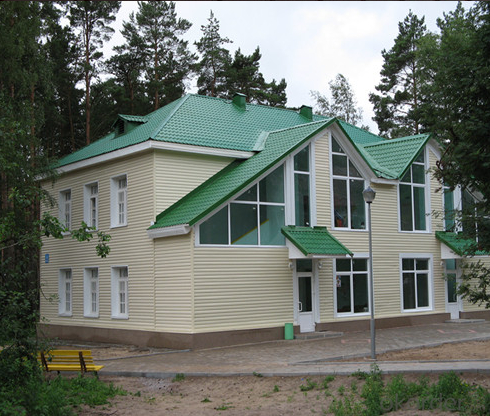
3.Coated Steel coil/Roofing Application/AL-Zn PPGI Image:
production Line:
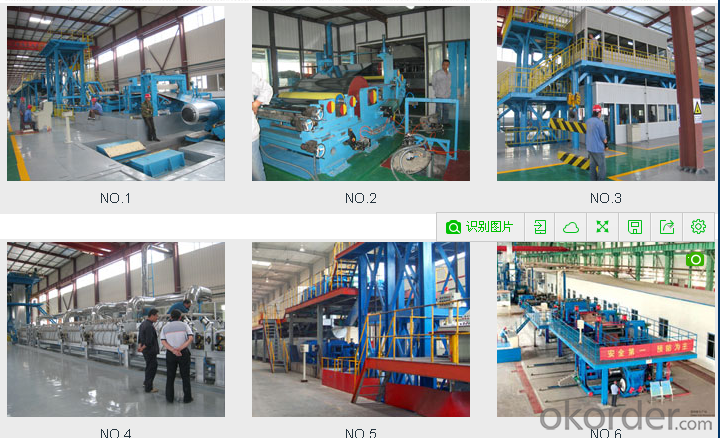
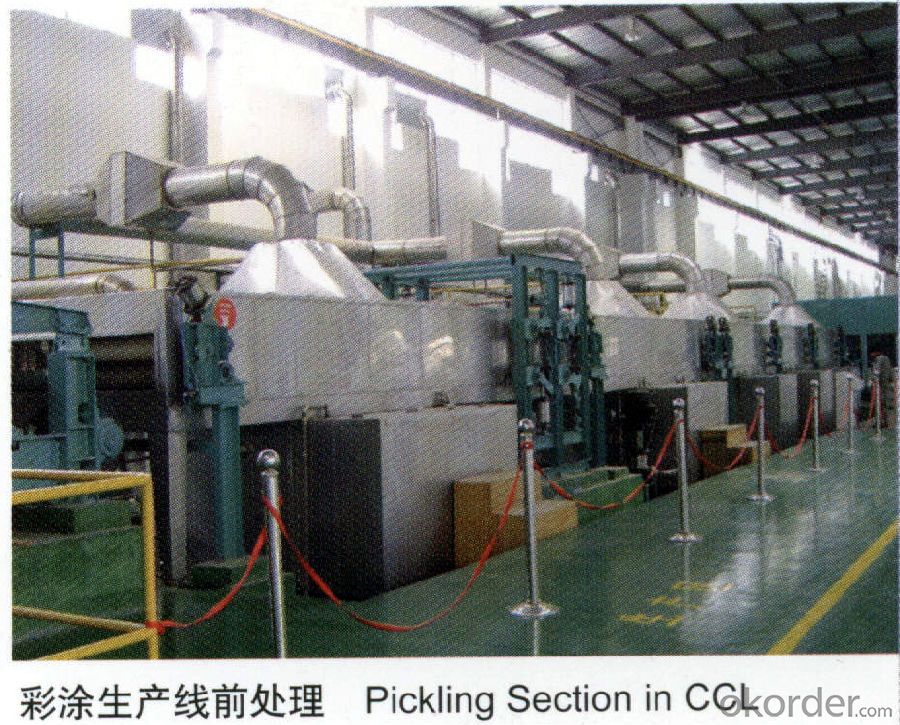
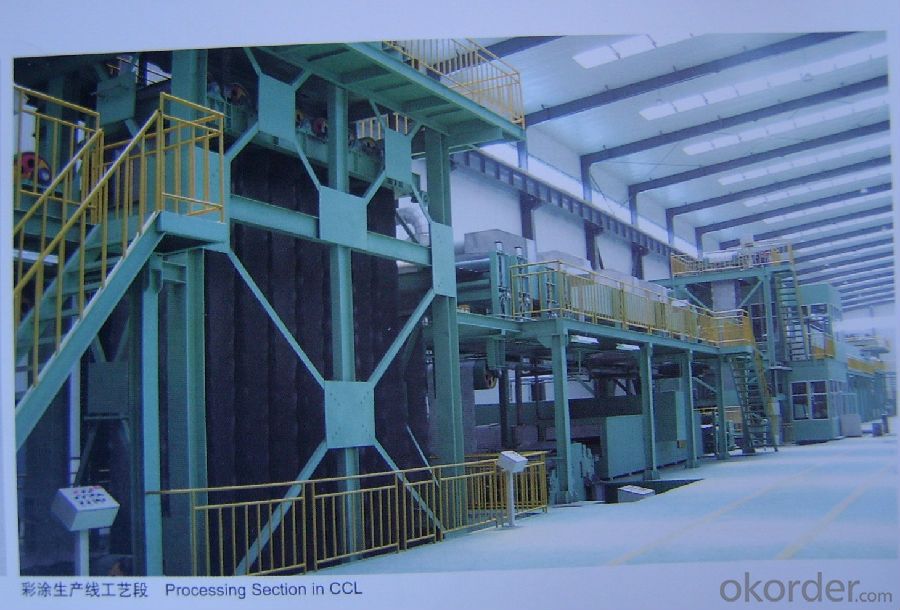
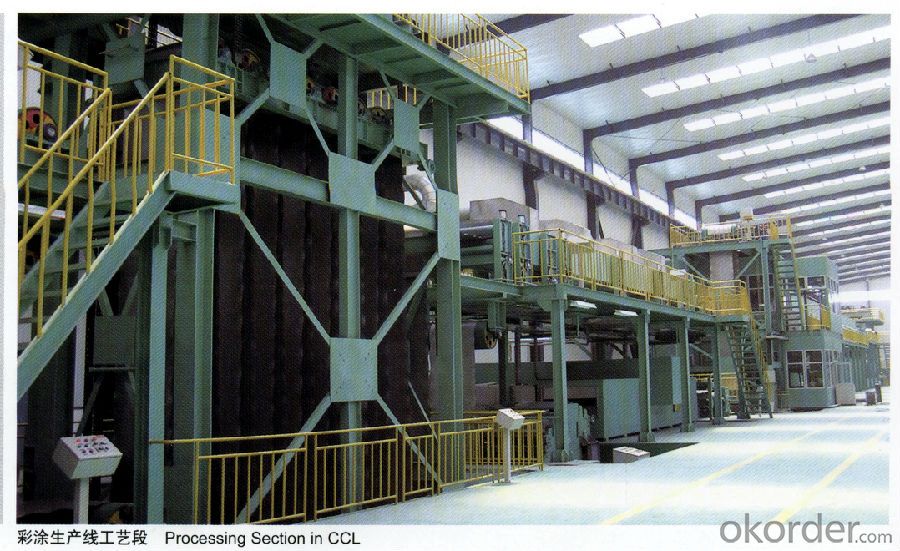
production show:
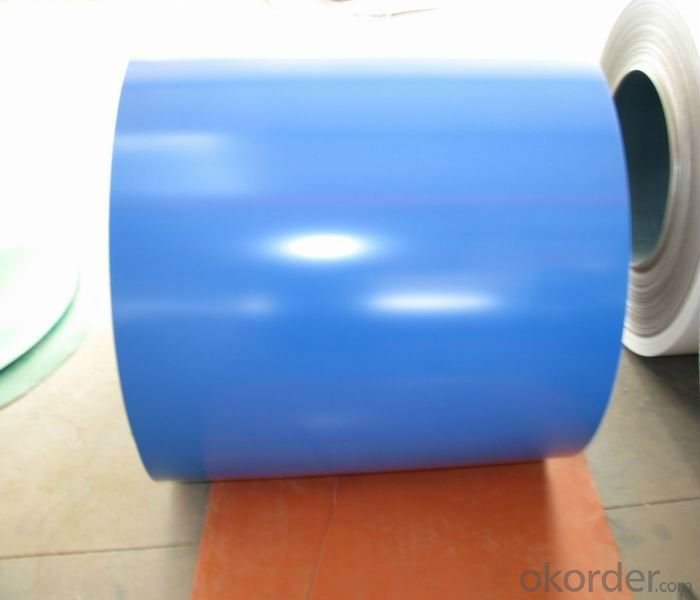
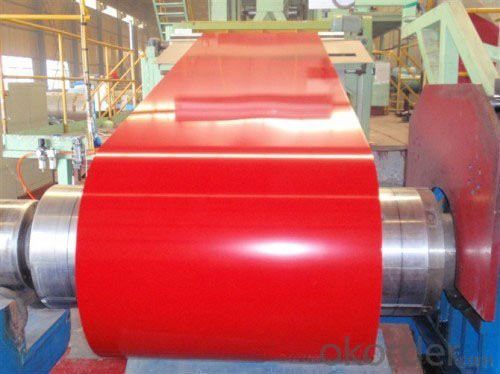
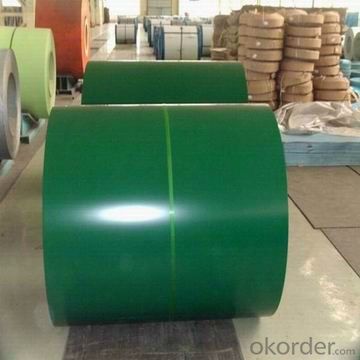
4.Packaging & Delivery
(1)Metal Band Strapping (2) Outside Diameter Ring (3) Label
(4)Protective Steel Sheet (5) Water and Rustproof paper (6)Steel Sheet
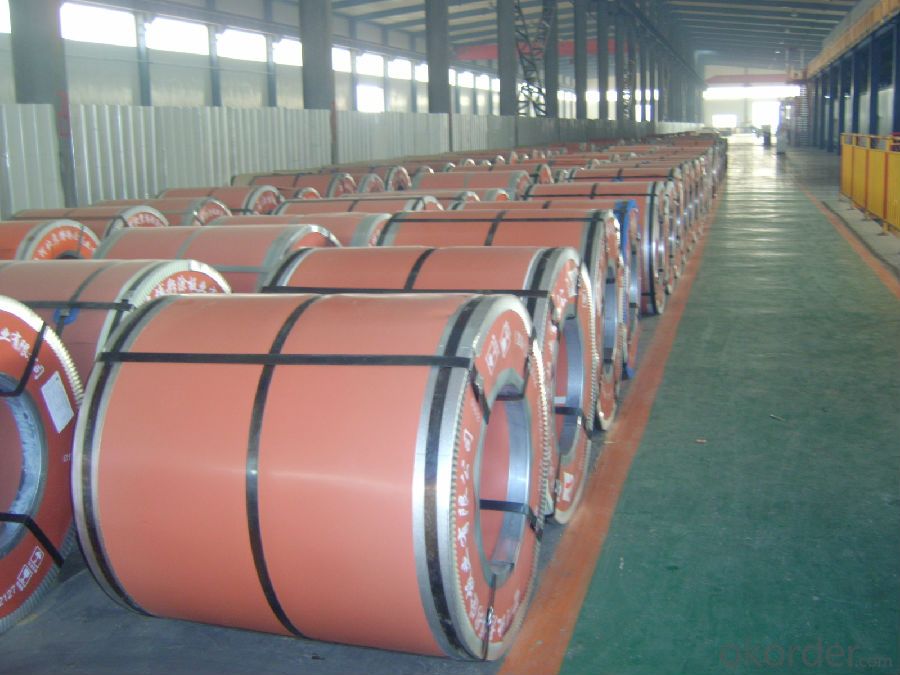
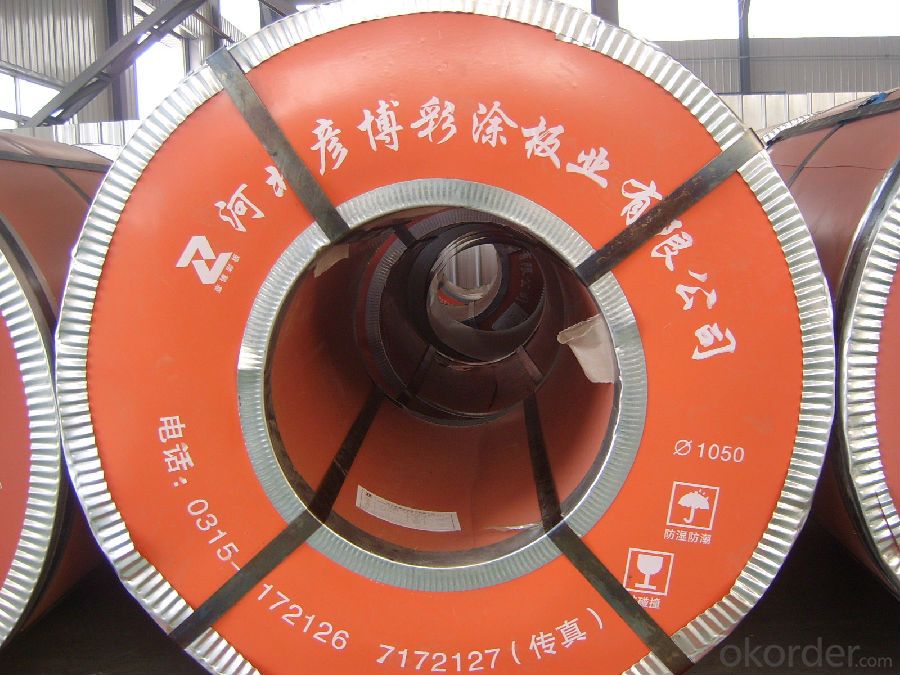
5.FAQ
We have organized several common questions for our clients,may help you sincerely:
①How about your Warranty?
Warranty:
1Year for the whole light. Warranty is based on correct storage, installation, using and maintenanc.
②How to guarantee the quality of the products?
We have established the international advanced quality management system,every link from raw material to final product we have strict quality test;We resolutely put an end to unqualified products flowing into the market. At the same time, we will provide necessary follow-up service assurance.
③How long can we receive the product after purchase?
In the purchase of product within three working days, We will arrange the factory delivery as soon as possible.
- Q: This is my first time buying new strings for my violin and I’ve narrowed it down to two choice based on reviews and cost. The only difference I can see between the strings is that one has a solid steel core and the other has a synthetic core. What are the pros and cons of each type of core?
- It depends on the tone you want. Synthetics are a more artificial, but rich tone. Solid steel strings will have a beautiful and bright tone, but may be a tad bit more difficult to play.
- Q: What are the different coil slitting methods used for steel coils?
- There are three main coil slitting methods used for steel coils: rotary shear slitting, loop slitting, and oscillating slitting. Rotary shear slitting involves using rotating knives to cut the steel coil into narrower strips. Loop slitting is a process where the coil is looped through a series of rolls, and the desired width is achieved by adjusting the tension in the loop. Oscillating slitting is another method where the steel coil is passed through a set of oscillating blades, resulting in precise and high-speed slitting. These methods offer various advantages and are chosen based on the specific requirements of the steel coil slitting process.
- Q: Guitar?I have a steel- string, but prefer nylon.:)
- I like the sound of steel better, sweetie! But nylon is nice too, especially if you wanna play, but you don't want to disturb others!
- Q: If you keep it dry and clean, what steel will last the longest over the years with continued use and sharpening?
- you eventually will wear the blade out. i have seen old guys pocketknives that they used for whittlin and the blades have deep curves in them like khukris from wear. i reccommend, 440 stainless, or something with a rockwell hardness rating above 45.
- Q: How are steel coils used in the manufacturing of consumer goods?
- Steel coils are used in the manufacturing of consumer goods as a primary material for various products. The coils are typically processed and transformed into different shapes, such as sheets, strips, or wires, which are then used to create a wide range of items like appliances, furniture, automotive components, and construction materials. The durability and strength of steel make it an ideal choice for consumer goods, ensuring long-lasting and reliable products for consumers.
- Q: hey... i don't need to change my strings, but i found a set of Bronze acoustic guitar strings by pure tone... i have a few questions on them:can i put them on a steel string guitar? i know i can't put nylon strings on... but i don't see why i can't put bronzethey are light gauze... i have no idea what my current gauze is, but i play in Dropped D tuning... so would the E/D string (6th) be too loose? finally, can you get strings designed to be played in Drop D?any help is apprechiated :D
- I don't see why not. Put them on and try it out.
- Q: Can steel coils be stored outdoors?
- Steel coils can be stored outdoors, but it is important to protect them from moisture and other environmental elements to prevent rust and damage.
- Q: What are the common coil processing methods?
- Some common coil processing methods include slitting, cut-to-length, leveling, and blanking. These methods are used to transform large coils of metal into smaller, more manageable sheets or strips for further manufacturing processes.
- Q: How are steel coils used in the production of electrical transmission towers?
- Steel coils are used in the production of electrical transmission towers in various ways. Firstly, steel coils are often used to manufacture the structural components of the towers, such as the main support columns and crossarms. These components need to be strong and durable to withstand the weight and stress of the transmission lines, and steel coils provide the necessary strength and stability. Additionally, steel coils are also used to fabricate the brackets and braces that reinforce the transmission towers. These brackets and braces help to distribute the load evenly and provide additional support to the structure. Steel coils can be easily shaped and welded into the required forms, making them ideal for creating these intricate components. Moreover, steel coils are commonly used to create the foundation and anchor bolts that secure the transmission towers to the ground. These bolts need to be strong and resistant to corrosion, as they play a crucial role in maintaining the stability and integrity of the entire tower structure. Steel coils are often treated with galvanization or other protective coatings to enhance their durability and prevent rusting. Overall, steel coils are an essential material in the production of electrical transmission towers due to their strength, durability, and versatility. They enable the construction of sturdy tower structures that can support the weight of the transmission lines and withstand various environmental conditions.
- Q: How are steel coils used in the production of furniture components?
- Due to their strength, durability, and versatility, steel coils are frequently utilized in the manufacturing of furniture components. These coils, crafted from high-quality steel, undergo a process of uncoiling before being fed into a machine known as a stamping press. Within the stamping press, a die is employed to shape and cut the steel coil into various components necessary for furniture production, such as chair frames, table legs, or brackets. The utilization of steel coils facilitates the mass production of furniture components with uniform dimensions and exceptional accuracy. The robustness of steel guarantees that these components can withstand heavy loads, providing stability to the furniture. Additionally, steel coils possess the ability to be effortlessly molded into diverse shapes and sizes, enabling the creation of a vast array of furniture designs. Furthermore, steel coils are frequently subjected to protective treatments or coatings, such as paints or galvanization, in order to enhance their resistance to corrosion, moisture, and wear. This ensures that the furniture components possess a longer lifespan and retain their aesthetic appeal over time. In conclusion, the presence of steel coils plays a vital role in the production of furniture components, as they offer strength, durability, and versatility. They enable the mass production of precise and consistent components, while their protective coatings guarantee the durability and quality of the final furniture products.
Send your message to us
Coated Steel coil/Roofing Application/AL-Zn PPGI
- Loading Port:
- Tianjin
- Payment Terms:
- TT OR LC
- Min Order Qty:
- 25 m.t.
- Supply Capability:
- 50000 m.t./month
OKorder Service Pledge
OKorder Financial Service
Similar products
Hot products
Hot Searches
Related keywords
